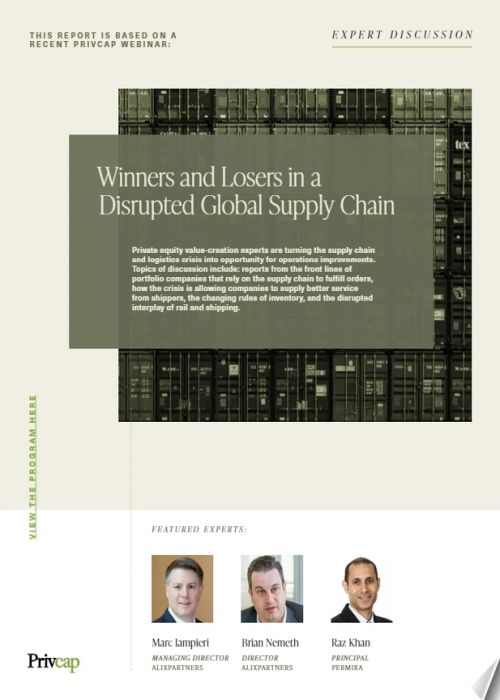- with readers working within the Media & Information industries
We recently joined a Privcap discussion on Winners and Losers in a Disrupted Global Supply Chain. In our conversation with Raz Khan from Permira we explored the challenges posed by the fluidity and volatility of the supply chain crisis. The full discussion is summarized in Privcap's report:
Here are some of the highlights:
- Disruption cycles are speeding up and the ability to be flexible and adapt is the key to success: Recently navigating disruption has felt like an endless game of whack-a-mole; just when you think you've solved one issue another quickly pops up. For example, you think you have your shipping sorted only to find out there aren't enough truck chassis to move products on.
- There is no silver bullet, or one solution for all and companies, companies need to get creative and think out of the box: Different business have different margins, cost structures, supply chains and exposures to disruption. Each business needs to find the solution that is best for its priorities around speed, cost, inventory. Innovation is critical and we've seen some interesting acquisitions which suggests some creative thinking in sectors such as fashion.
- Companies need to take both a short and long term position: Addressing the immediate problems is one thing but this needs to be done with a longer term view in mind. Short term, this might include the immediate steps of reviewing the current third party partners you work with (transportation or sourcing) or addressing other inflationary pressures. Longer-term measures could address the entire combination of people, process, and technology to ensure a balance between efficiency vs resilience and off-shoring vs near-shoring to afford the business agility in the face of future disruption.
- Comprehensive scenario planning is critical to mitigate future risks: The pandemic was not a black swan event. It should've been on everyone's risk register yet still many businesses were caught napping. Failure to scenario plan effectively could lead to a risk of 'fighting the last war' and most organizations will be pandemic-ready but completely blind-sided by another significant disruptive force.
The situation remains highly changeable and businesses would do well to have visibility of their key metrics to anticipate future changes. As our Chief Executive Simon Freakley observed in his recent article, 'Ultimately, we head into a much more fractured world, where supply chains must be reconfigured, costs (and almost surely consumer prices) will go higher, and growth will be slower. Companies must proactively position themselves today to face this more disrupted future.
The content of this article is intended to provide a general guide to the subject matter. Specialist advice should be sought about your specific circumstances.



